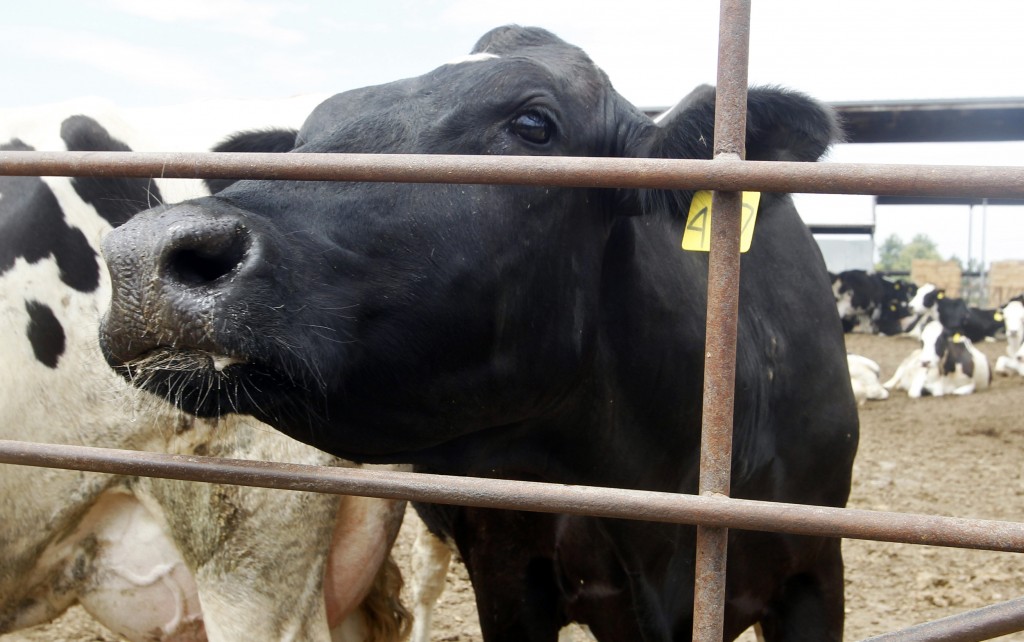I am really enjoying my Panama grass fed free range Filet Mignon now, especially after reading this article from Reuters.
If you eat meat in any country in the European Union, or even in China or Russia, you don’t have to worry about getting a dash of ractopamine with your pork or beef. All these nations ban the use of the growth-promoting drug.
But if you eat meat in the United States, buyer beware. Ractopamine may be unsafe for you. The drug is certainly unsafe for pigs and other farm animals dosed with it. It has caused hundreds of thousands of pigs to become lame or unable to walk without intense pain, or die.
Pork producers feed pigs ractopamine during the last few weeks before they are sent to the slaughterhouse. It alters the pigs’ metabolism so that 10 percent more of the food they eat turns into muscle. That translates into faster growth and leaner meat.
Eli Lily & Co’s Elanco Animal Health unit, the leading producer of ractopamine-based livestock drugs, said in a statement to Reuters last year that it remains confident in its products’ safety and the FDA’s approval process. The drug was originally approved by the FDA in 1999.
Beef producers are also flocking to ractopamine, according to Fortune magazine, after major meat packers refused to accept cattle doped with a similar muscle-building drug, Zilmax. Led by Tyson Foods and Cargill, the packers stopped accepting cattle treated with Zilmax in late 2013 after finding that the cattle were arriving at their slaughterhouses “hoofless” and in severe pain, according to a Reuters special report.
A March 2014 report from Texas Tech University and Kansas State University found that during cattle’s lives “the incidence of death was 80 percent greater in animals administered [Zilmax].”
Since the major packers stopped accepting cattle treated with Zilmax, the drug’s manufacturer, Merck, has begun studies to show the drug is safe and can go back on the market. But the packers have so far refused to go along. Not only do they say it causes animals to suffer; it also would prevent meat sales to foreign nations that ban use of the drug.
Now, however, beef producers are replacing Zilmax with ractopamine, though it seems to offer little for the well-being of their animals while risking serious harm to them. The drug has been linked to nearly a quarter-million cases of adverse reactions in pigs, including lameness, trembling, hyperactivity, hoof disorder, dyspnea, collapse and death.
Beef eaters should be concerned. The Food and Drug Administration’s original approval of ractopamine included no safety assessment on humans. A 2009 review of the related science by the European Food Safety Authority identified one assessment of the drug involving humans. That assessment involved just six healthy young men, one of whom dropped out after his heart began racing and pounding abnormally.
Yet the FDA allows pig producers to give ractopamine to their animals up until they are shipped to the slaughterhouse. A 2013 Consumer Reports study of supermarket pork products found ractopamine in one in five of the pork products inspected.
The meat industry’s focus on increasing production could be putting it at odds with consumers, who are ever more concerned about food safety and animal welfare.
The success of “fast-casual” restaurant chains like Chipotle, which foreswear meat from animals raised in the most inhumane conditions and dosed with drugs like ractopamine, shows that consumers will seek out and pay more for naturally raised meat.
Picking up on this, Smithfield Foods, the nation’s largest pork producer, has pledged to start seriously cutting back on ractopamine. It has also pledged to stop using gestation crates.
The public has already reacted against the extreme confinement of calves in veal crates, mother pigs in gestation crates and chickens in battery cages. As people learn how growth-promoting drugs can harm farm animals, they could well respond the same way.
The meat industry talks about responsible animal husbandry. But some parts of it look more like animal production run amok.
Long focused on ramping up meat production to meet increasing demand, producers jam animals together indoors, often in tight crates and cages; breed them to grow at a much faster rate than their natural pace, and dope them with hormones, antibiotics and other drugs to augment what’s been achieved through selective breeding for fast growth and hyper-productivity.
For food safety and animal health reasons, the European Union decided many of these drugs have no place in agriculture. China and Russia, not known for strict food-safety regulations, agree.
The question remains why American farmers still use them?
